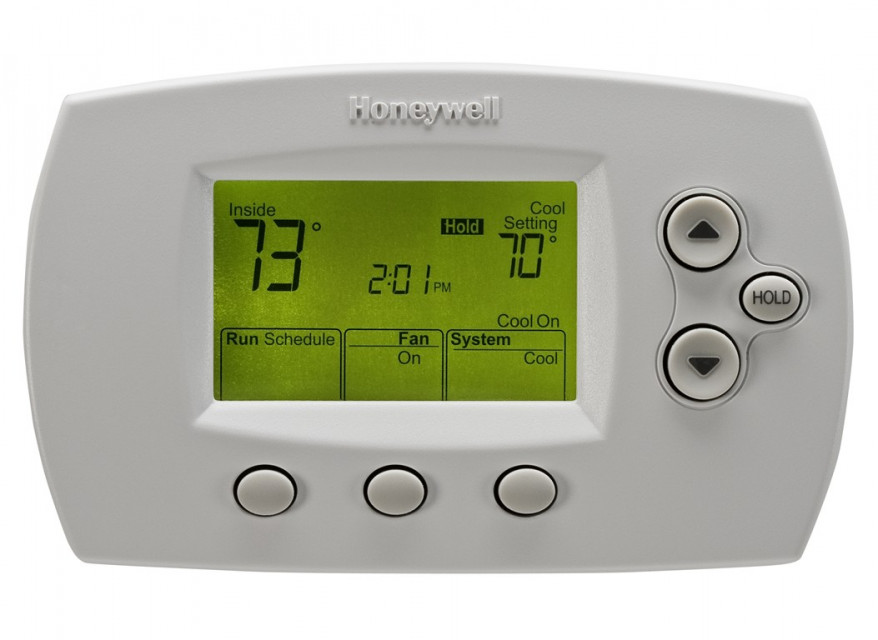This all-technical, three-hour seminar will make you familiar with the many types of old steam heating systems and what goes wrong with them. Dan Holohan’s easy-to-follow...
Best Thermostats for Steam Systems

Someone on The Wall asks, "What is the best thermostat for a steam system?"
Bill Wolfe replies:
First, a couple questions. Do you have central AC? Is the house vacant during work/school hours? Are you interested in remote communications like checking status or changing temperatures from a cell phone? Deep setbacks are generally not recommended for steam systems, and steam systems have considerable "flywheel" effects. Especially if someone is home during the day, a programmable stat may not be cost-effective. Regardless of programmable or not, set the stat for 1 cycle per hour, for your steam system. Make sure your house is up to standards on insulation, windows and sealed up against infiltration. For a programmable, consider the Honeywell VisionPro IAQ with the telephone access module IF you want remote communications. If not, The VisionPro TH8110 or TH6110 will work. The TH6110 has a lower price point than the TH8110, and fewer features. Either will control your central AC, if you have it. Try a TH5110 non-programmable, if manual set back is OK with you. Try a 5 degree setback; more may not be feasible with a steam system. All three are available from your heating/cooling contractor.
Boston replies:
So the house isn’t really vacant during the day, someone is in the house at one point or another. I was really looking for something that would work as a setback during the night and weekends. When we updated the old manual thermostat to the current Rite Touch programmable one, we noticed a big reduction in our fuel costs but also noticed an increase in temperature fluctuation in the house. We have friends that have steam heat with programmable thermostat and it works much better then our Rite Touch (we can’t figure out what the manufacture is). We do not have AC and no need for cell phone communication. Is it worth spending the money for an exterior sensor? Is Honeywell the only option? I thought I heard/read there are thermostats specifically designed to work with steam heat?
Bill Wolfe replies:
The TH6110 as a programmable can be set up either as a 5/2 or 5/1/1 thermostat, meaning that you can have the same program Monday thru Friday and a different program on Saturday and Sunday, OR a different program on Saturday OR Sunday. Each day has 4 periods: Wake, Leave, Return and Sleep. For your example, you would program in a 5 degree setback beginning with the sleep period. The system would resume the comfort temperature, say 70, at the beginning of the wake period. You could program a 15 minute setback at the leave time, and make the return time at the end of that period, since the house is occupied most of the time. That short of a setback will not be noticable. The TH8110 VisionPro has an option for an outside temperature sensor, but it only provides an outside temperature display on the thermostat, no control function. Most thermostats by any manufacturer should work with steam, however, if you aren't working with a contractor, read the package VERY carefully if you are buying one from a home center. Honeywell thermostats are factory preset for 6 cycles per hour for forced air. You or your contractor will need to set them to 1 cycle per hour for your steam system. This replaces the old mechanical heat anticipator. Similar instructions apply to other manufacturers as well. If you want manual, non-programmable control, try a TH5110. The key is not to set back too much. Steam systems take longer to respond that hydronic or forced air. They also release heat long after the burner has shut down. Locate your stat on an inside wall, away from radiators, sunlight, kitchen or other heat sources. Fill the wiring hole with insulating material so the wall cavity temp
won't interfere with the stat.
Steamhead replies:
I'll second the Honeywell stats but Bill's point about how steam systems respond to a call for heat needs further explanation. Unless the steam main vents on your system are sized and installed properly, the system will respond more slowly than it should. You want the steam to reach the end of the main in a minute or two after the boiler starts sending steam into the pipes. This will insure that steam is at each radiator takeoff quickly. When the main vents close as steam reaches them, the steam will then rise to each radiator at the same time.
If your steam pipes are not insulated, insulate them. This will also shorten the period when the mains are filling with
steam, since less steam is needed to heat them up. They'll also lose much less heat while the system is running, and will hold their heat longer after the burner shuts off.
With response time minimized this way, it's possible to run a steam system at 2 or 3 cycles per hour instead of 1. This way the system doesn't completely cool down between firing cycles, saving some fuel on the next cycle and increasing comfort.
One of the nice things about these Honeywell units (and some others too) is that you can reset the cycles-per-hour rating to suit your particular system, as Bill mentioned.
Bill Wolfe replies:
Great point, Frank. Thanks for the info, and for updating the customer.
Leave a comment
Related Posts
We always have turkey for Thanksgiving. I mean who doesn’t? My job wasn’t to cook it, though; it was to eat it.
I had written a story for Plumbing & Mechanical a while back about a fella in Canada who sent me this email: "Our problem is that five out of hundreds of univentilator co...